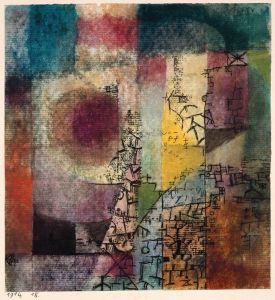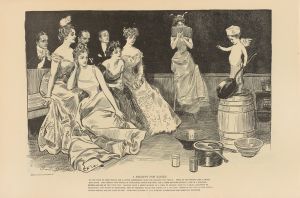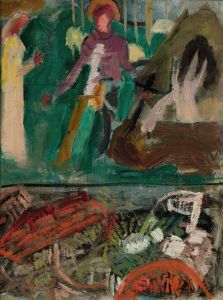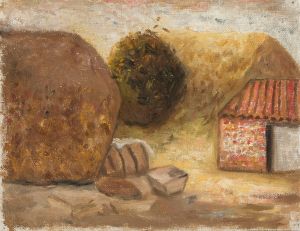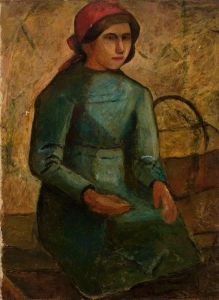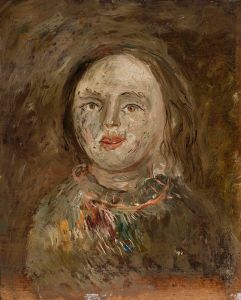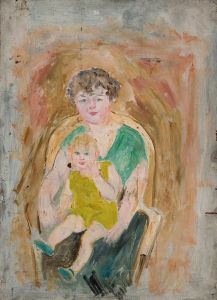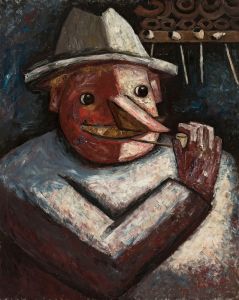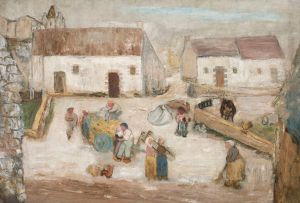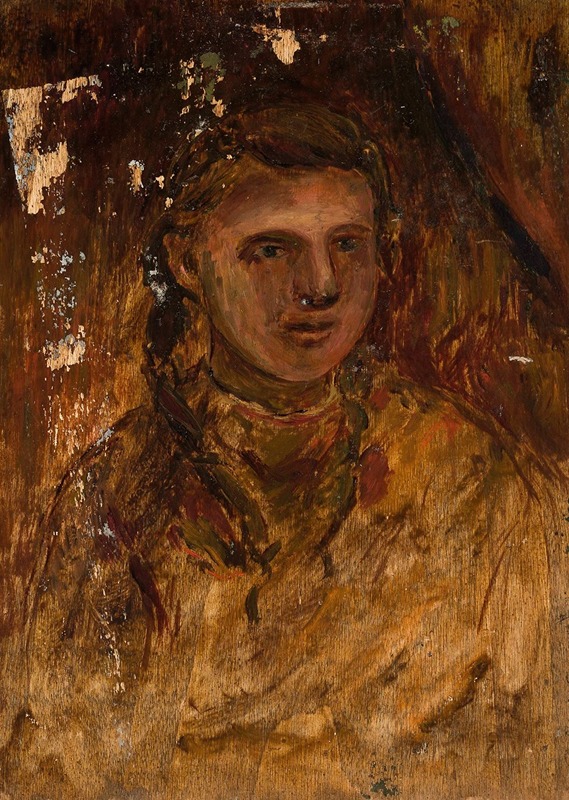
Study of a little girl
A hand-painted replica of Tadeusz Makowski’s masterpiece Study of a little girl, meticulously crafted by professional artists to capture the true essence of the original. Each piece is created with museum-quality canvas and rare mineral pigments, carefully painted by experienced artists with delicate brushstrokes and rich, layered colors to perfectly recreate the texture of the original artwork. Unlike machine-printed reproductions, this hand-painted version brings the painting to life, infused with the artist’s emotions and skill in every stroke. Whether for personal collection or home decoration, it instantly elevates the artistic atmosphere of any space.
Tadeusz Makowski was a Polish painter known for his unique style that combined elements of folk art, symbolism, and modernism. Born on January 29, 1882, in Oświęcim, Poland, Makowski initially studied classical philology at the Jagiellonian University in Kraków before pursuing art at the Academy of Fine Arts in Kraków under the tutelage of Józef Mehoffer and Jan Stanisławski. In 1908, he moved to Paris, where he became part of the vibrant artistic community and was influenced by the works of artists such as Paul Cézanne and the Cubists.
"Study of a Little Girl" is one of Makowski's notable works, reflecting his fascination with childhood and innocence. Although specific details about the painting's creation date and current location are not widely documented, it is consistent with Makowski's broader body of work, which often features children as central figures. His paintings are characterized by their simplicity, use of geometric forms, and a muted color palette, which together create a sense of nostalgia and introspection.
Makowski's interest in depicting children can be traced back to his experiences during World War I, when he was stranded in France and began to draw inspiration from the rural and urban landscapes around him. The children in his paintings are often portrayed in a stylized manner, with large heads and simplified features, reminiscent of folk art traditions. This approach allows Makowski to convey a sense of universality and timelessness in his subjects.
In "Study of a Little Girl," Makowski likely employs his signature style, focusing on the essence of the child's character rather than intricate details. The painting would typically feature soft, earthy tones and a composition that emphasizes the child's innocence and purity. Makowski's ability to capture the spirit of childhood without resorting to sentimentality is a hallmark of his work, earning him recognition as a master of portraying the inner world of children.
Throughout his career, Makowski remained somewhat isolated from mainstream art movements, choosing instead to develop his own distinctive style. His works were exhibited in various galleries and exhibitions, both in France and Poland, and he gained a reputation as an artist who could convey deep emotional truths through seemingly simple compositions.
Makowski continued to live and work in France until his death on November 1, 1932. Despite facing challenges such as financial difficulties and health issues, he remained dedicated to his art, leaving behind a legacy that continues to be celebrated for its originality and emotional depth. His paintings, including "Study of a Little Girl," are held in high regard and can be found in various collections, reflecting the enduring appeal of his artistic vision.
In summary, "Study of a Little Girl" by Tadeusz Makowski exemplifies the artist's unique approach to capturing the innocence and simplicity of childhood. Through his use of geometric forms, muted colors, and a focus on the essence of his subjects, Makowski created works that resonate with viewers and offer a glimpse into the timeless world of childhood.





